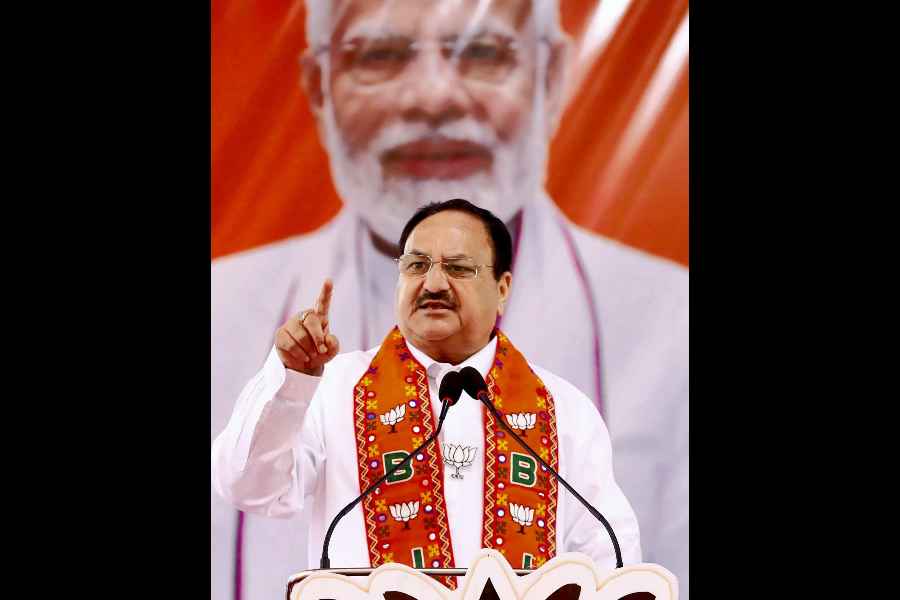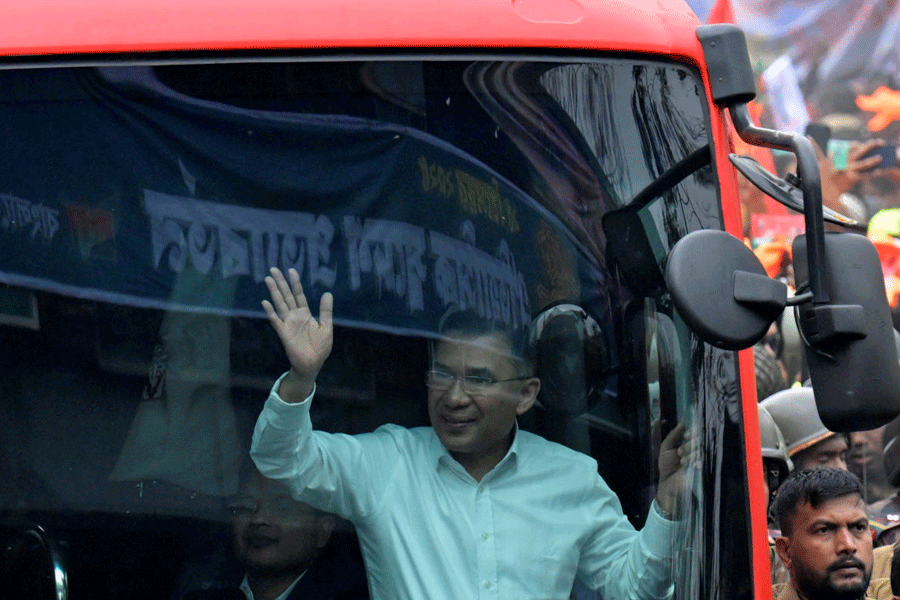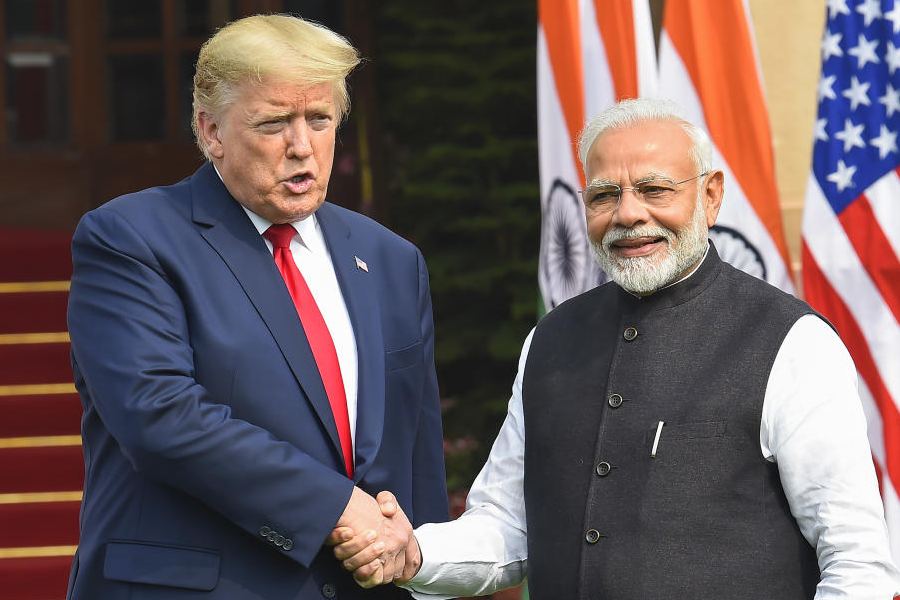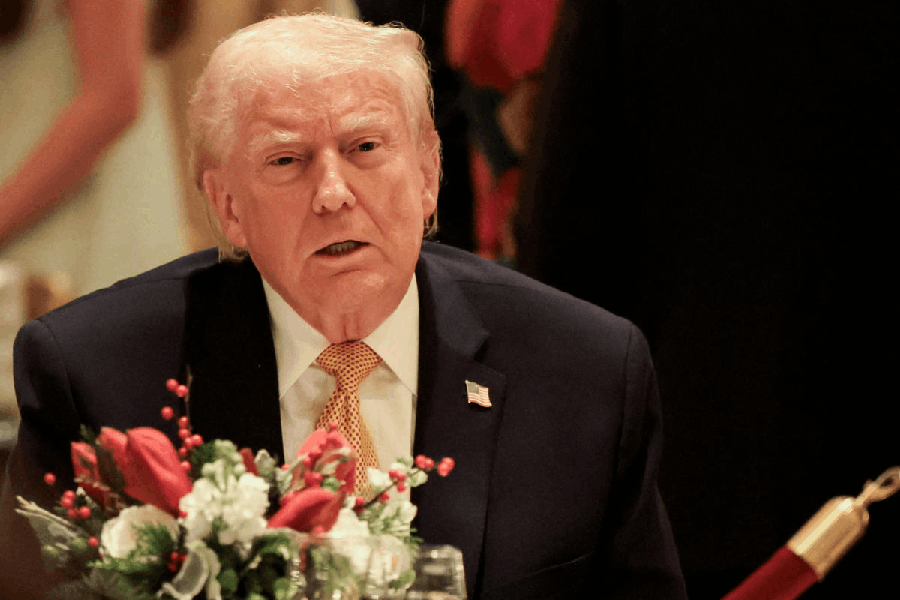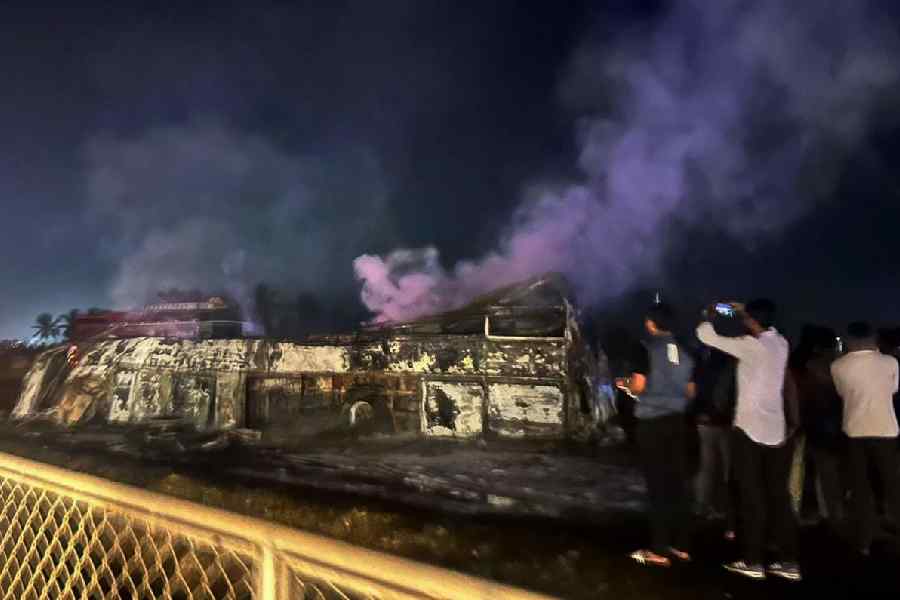 |
| Many lessons |
At a high-level meeting in Washington DC to discuss terrorism, a troubled American vice-president is reported to have said that the issue was not “our analysis” of the threat but “our response” to it. Dick Cheney’s exasperation will be shared by many in India. Here, a flawed appreciation, centred on denial, of the threats to national security and the economy have been invariably accompanied by astonishing procrastination.
It is fortunate that the Gujarat chief minister, Narendra Modi, is not wedded to this Shivraj Patil Doctrine. The Ahmedabad blasts that killed over 50 people on July 26 and the recovery of 17 bombs in Surat the next day shook Gujarat. Politically, it was very damaging to Modi, whose appeal rested on the assurance of security and a no-nonsense attitude to subversion. To restore popular faith, Modi had to have a robust response but that could begin once the contours of the conspiracy were evident.
There was also the inflammatory “Rise of Jihad, Revenge of Gujarat” email sent by the Indian Mujahedeen to the media five minutes before the first bomb exploded in Ahmedabad. It taunted the people of Gujarat with quasi-theological profanities: “Remember, O you Gujarati Hindus! O you filthy, shameless and foul creatures! O you Gujarati Hindus, most immoral and the most gutless cowards! Remember whom you have fought against! You have fought against the inheritors of a Messenger of Allah, of a Prophet of Allah whose terror was cast on the enemy from a distance of a month’s journey.”
The email also mocked Modi in the arcane language of the pulpit: “O leader of disbelieving cowards and eunuchs, Narendra Modi! O you base-born of illegitimate birth! O you spineless coward! You boast of the pride of Gujarat and pride of Gujaratis. You brag of your filthy faith and conviction in... Look! We are back with the Will of Allah, striking in your own land..., assaulting and ruining your own cities, raiding and ravaging your own territory!...We swear by Allah... we will make you, O Modi, an example and a lesson, that the enemies of Islam should learn from.”
No state could afford to sit by idly when its people and leadership are needled in such a manner.
The importance of the August 16 disclosures by the Gujarat police must be viewed in this context. To many, the revelation that a breakaway faction of the Students Islamic Movement of India had undertaken the terror-operation bombings in Ahmedabad, Surat and Jaipur may not be all that dramatic. After all, Simi was always in the shortlist of suspects. However, there is a difference between suspecting an organization and putting names and faces to the killers. Cracking the Ahmedabad bombing conspiracy was, arguably, the first major counter-terrorism success in India since the Mumbai police unearthed details of the Mumbai serial blasts of March 1993. The Coimbatore blasts of 1998 and the attack on the American Center in Calcutta in January 2002 produced successful investigations but didn’t generate a response.
The details of the Ahmedabad-Surat conspiracy are chilling. There is now evidence that the Indian Mujahedeen, far from being a letterhead generated by the ubiquitous Inter-Sevices Intelligence of Pakistan, is actually a split from Simi. The Indian Mujahedeen claims that it is “the militia of Islam whose each and every Mujahid belongs to this very soil of India.”
Yet, despite its indigenous roots, the Indian Mujahedeen is only peripherally driven by the grievances of Indian Muslims. Its worldview has been shaped almost entirely by theology, particularly those verses from the Quran that invoke divine wrath on non-believers. The Indian Mujahedeen is unapologetically contemptuous of pluralism and dispensations based on consent: “The terms democracy, secularism, equality, integrity, peace, freedom, voting, elections are yet another fraud with us.” It denounces “faithless infidels and their hypocrite allies from amongst the so-called Muslims like Arshad Madni & Mehmood Madni (Jamiat-e-Ulema-i-Hind leaders and pillars of the Deoband fraternity) who have bartered their faith in return of just one seat in the Parliament.”
The adherents of the Indian Mujahedeen are not Muslim protesters; they are Islamist revolutionaries cast in al Qaida mould. Referring to Zahid Sheikh from Juhapura, Ahmedabad — who has apparently confessed to planting bombs — a Gujarat police officer observed: “He is a fanatic. He is not a Gujarati; he is not an Indian. He claims he is merely a soldier of Islam.”
The profiles of those identified as the main conspirators would indicate that the average Indian Mujahedeen is young, educated and from a lower middle-class background. While the 26-year-old Mufti Abu Bashir Ilahi, the man who took over the Indian Mujahedeen after the arrest of Safdar Nagori last year, has had a seminary education and was an Arabic teacher in a Hyderabad madarsa, the 35-year-old Sajid Mansuri from Surat has a degree in psychology and is fluent in English. The perverse Indian Mujahedeen ideology, it would seem, has appealed to Muslim youth in both the traditional and modern sectors. This is epitomized by the joint leadership of Mufti Abu Bashir and Abdul Subhan alias Taifique Bilal (still absconding), the bomb-maker who was a computer engineer before he embraced jihad.
Overall, there appear to be uncanny similarities between the Indian Mujahedeen and the Islamist terror networks in Britain. Both groups have rejected the open societies they operate in — equating it with decadence. And both have used exaggerated notions of victimhood to embrace the unflinching certitudes of an idyllic alternative grounded in faith.
Ironically, while Indian Mujahedeen radicals have rejected the compromise-negotiations-adjustment approach of Muslim community leaders, their activities have been facilitated by communities that simultaneously perceive them as wild young men with misplaced energies. The Simi camp in Halol, for example, was conducted under the cover of the Khumtir dargah, an important symbol of Indian Islam. There is also evidence of Hyderabad becoming a reliable sanctuary for those plotting terror. Mufti Abu Basheer was employed in a madarsa run by Maulana Abdul Aleem Islahi — described by a liberal journalist as “a learned man... restrained in his dignity.” The maulana’s son, Mujahid, was shot dead by the police in 2004 while allegedly trying to free Maulana Naseeruddin, the head of a radical madarsa, from police custody in Hyderabad.
Abdul Aleem’s younger son, Mohtasin, was arrested in March 2008 for his links with a Pakistan-trained terrorist, apprehended in Karnataka last January. Following Mohtasin’s arrest, some 50 burqa-clad women from the Dargah Jihad-o-Shahadat (Institute of Holy War and Martyrdom) run by the “learned” maulana tried to storm Saidabad police station where Mohtasin was being held, prompting comparison with the infamous Jamia Hafsa Madrassa whose women students were active in the battle of Lal Masjid in Islamabad.
Radical Islamist organizations with terrorist agendas have functioned in the open, thanks to the protection from liberals and human rights groups. A reason why it took the Gujarat police a mere 22 days to arrest the bulk of the conspirators was the fact that they were already on the police files as Simi operatives. A few had been arrested, for example, at a supposed convention on education in Surat on December 27, 2001. Human rights bodies made a huge fuss after the arrests. Among those who testified that the meet was bona fide was the same “Islamic scholar”, Maulana Abdul Aleem.
In the colourful conclusion of its July 26 email, the Indian Mujahedeen stated menacingly “that such and more severe attacks shall continue irrespective of what the blamers blame us for”. The threat was not directed at the English language. Indian terrorism has repeatedly demonstrated its operational capabilities. India has analysed terror many times over; the outstanding issue is “our response”.


